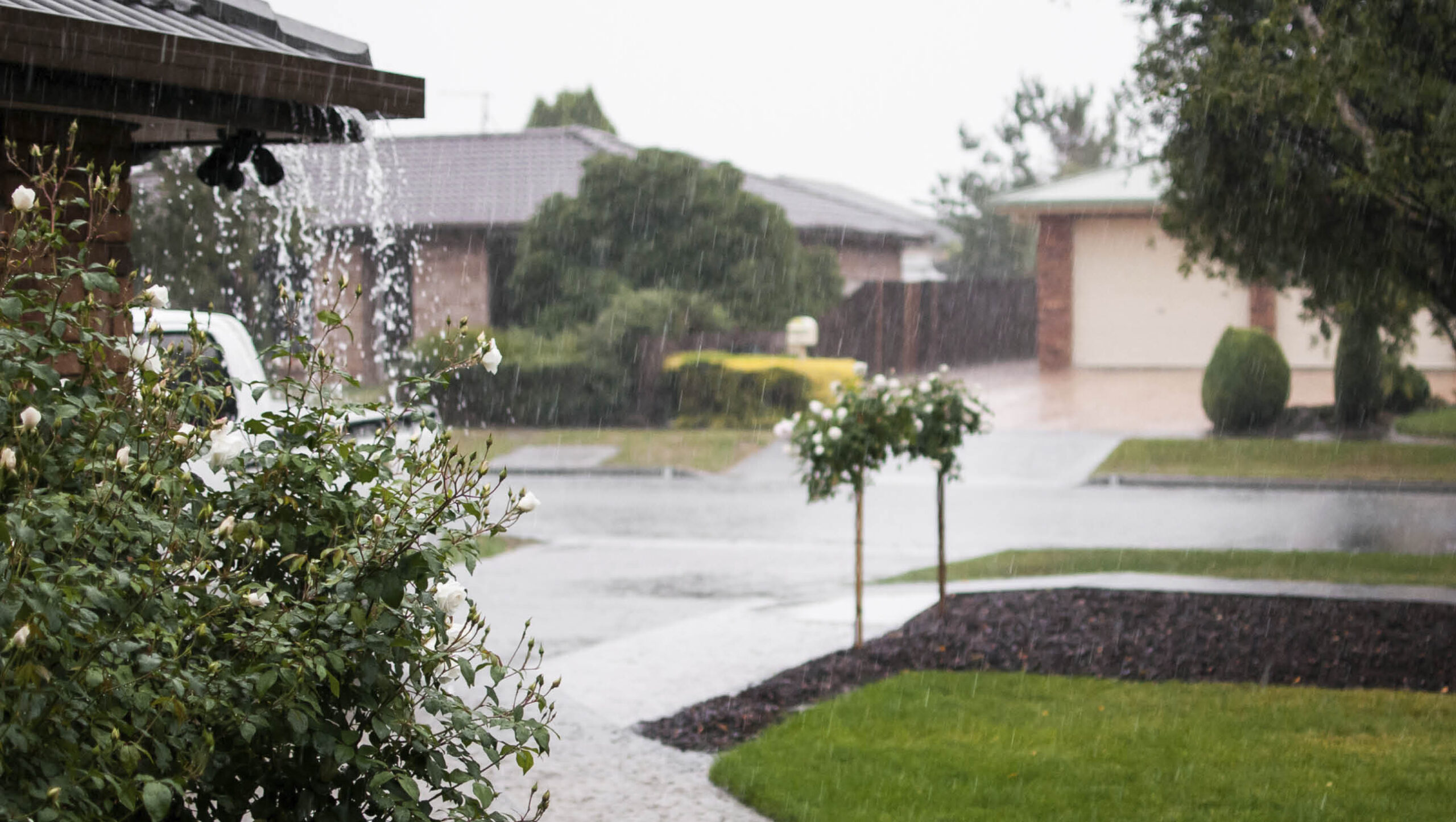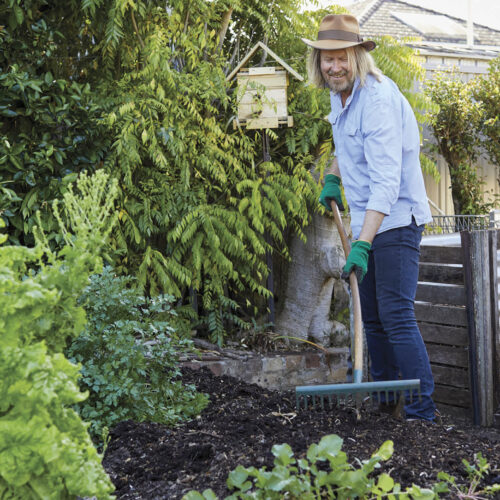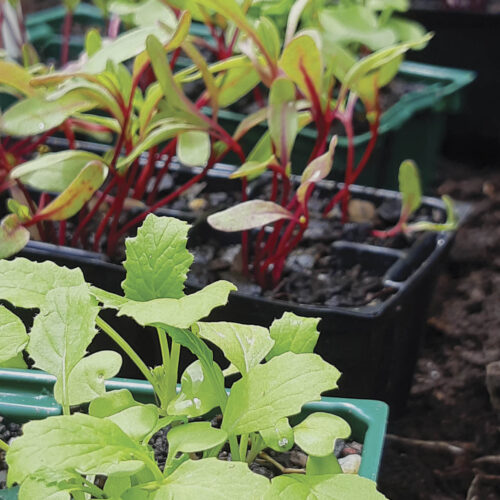Collecting rainwater for your garden
2022-06-22T05:19:40+10:00
Collecting your own rainwater is not only good for the environment, plants love it, writes Jessamy Miller.
Water is a precious resource that is in short supply in many areas of Australia at the moment. Also, the seasonal extremes we are experiencing due to climate change mean there is no guarantee our rivers, dams and reservoirs will get the replenishing rainfall they desperately need. Harvesting our own rainwater may be the only way to ensure we keep our gardens alive. As a bonus, plants prefer rainwater to treated mains water.
First flush
Rainwater is free of the minerals and salts absorbed while filtering through the earth (that end up in tap water via runoff into dams), and does not contain added chlorine, fluoride or sodium (added by municipal water authorities). Instead, it may contain more beneficial elements. As rain falls through the air, it absorbs nitrogen in its nitrate and ammonium forms. Energy released makes this process greater during lightning storms. The enriched rain soaks into the soil, and these essential elements are taken up by plants through roots and leaves, providing natural fertiliser.
Raindrops also absorb carbon dioxide and when combined with other minerals in the atmosphere, the drops become slightly acidic. Once in the soil, this helps to release micronutrients such as zinc, manganese, copper and iron that are essential to plant growth. Lastly, oxygen absorbed from air helps prevent waterlogging occurring in heavy rains.
Tap water and plants
As mentioned, municipal tap water has been treated with additives to ensure it is safe to drink. It contains chlorine and fluoride, which can build up in plant leaves and cause burnt leaf margins (in a worst case scenario). Also, sodium may be added as a water softener; sodium is toxic to plants and damages soil structure.
Water sitting in copper pipes with lead-based solder or passing through brass tap fittings may contain small amounts of lead. While frequent testing ensures Australia’s water is safe and meets strict water quality guidelines, excessive use of tap water on sensitive plants such as indoor plants and fruit trees may have negative effects on their health and growth. None of these are crucial, you won’t kill your plants from using tap water, it’s just that natural rainwater is preferred.
Environmental benefits
Of course there are many other benefits of collecting your own rainwater, which we have covered over the years in Organic Gardener, but which are becoming more important as our continent dries. Installing a rainwater tank offers greater water security and in times of restrictions – already in place for many towns and cities – it may be the only legal source of water for your garden given that outdoor watering is usually the first stage of restrictions.
While tanks have initial set-up costs, they result in lower water bills in the long-term – and the survival of your garden. Drinkable tap water is also a precious resource that must be stored in dams, run through treatment plants and piped to our homes, requiring infrastructure, maintenance and power. That’s not to mention the massive costs of desalination plants now providing back-up supplies in some states.
As the population grows, the water supply will need to be expanded. Using captured rainwater reduces mains water requirements and lowers our environmental footprint. Installing a rainwater tank for collecting rainwater also lightens strain on the stormwater system, and helps minimise run-off and flooding during heavy rain events.
Clean tanks
Tanks are an excellent way of collecting rainwater from the roof of any structure. However, just as rain absorbs beneficial elements from the atmosphere, it can also pick up less desirable ones. Over time, roofs accumulate dust, debris, bird manure and atmospheric pollution. These build up when there’s no rain, then are washed into the tank with the first rainfall. The solution is to install a first flush device onto the water storage tank. It flushes the roof clean by diverting the initial rainwater away from the tank, taking any pollutants present with it.
There are other times to use a first flush approach. Brass taps and hose fittings can contain traces of lead, so it’s common sense not to use water which been sitting in the garden tap or pipes for some time; run the water for a few seconds first. Using a water filter will also free your water from some pollutants.
Keep your tanks clean and healthy by following simple guidelines: cleaning gutters every three months; installing mosquito mesh and maintaining it; flushing out the u-tube; and maintaining pumps and fittings. Fully clean out the sludge (into the compost not into waterways) every two to three years.
In the garden, nature usually knows best and rainwater is no exception. Save money, help the environment and benefit plants by using rainwater where possible. Next they’ll be calling it a superfood!






